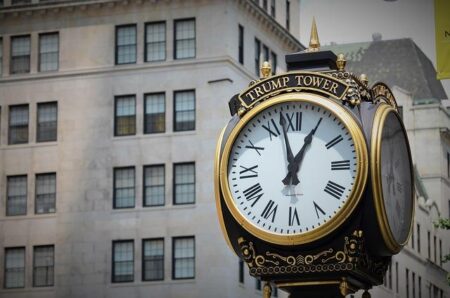Former President Donald Trump has directed the Pentagon to “immediately” resume nuclear weapons testing, marking the first such move in more than three decades. The directive aims to enhance the United States’ strategic capabilities amid growing competition with global rivals Russia and China. This unprecedented decision signals a significant shift in U.S. defense policy, raising questions about the future of international arms control and nuclear deterrence.
Trump Directs Pentagon to Resume Nuclear Testing Amid Escalating Global Tensions
In a move that has stunned both allies and adversaries alike, the former president has ordered the Department of Defense to immediately resume nuclear weapons testing after a 33-year hiatus. This directive aims to bolster U.S. strategic superiority amid intensifying geopolitical rivalry with Russia and China. Officials suggest that this unprecedented decision reflects mounting concerns over advancing missile technologies and expanding nuclear arsenals in Eastern Europe and the Asia-Pacific region.
Experts warn that restarting tests could have widespread consequences globally, potentially triggering a new arms race and complicating international disarmament efforts. The Pentagon has been tasked with developing a rigorous testing schedule, which will include:
- Expedited safety evaluations of nuclear warheads
- Enhanced simulation and live testing protocols
- Increased collaboration with national laboratories and defense contractors
| Country | Estimated Warheads | Testing Status |
|---|---|---|
| USA | 5,428 | Resuming tests |
| Russia | 6,375 | Active stockpile |
| China | 350 | Modernizing arsenal |
Implications of Renewed Nuclear Tests for US-Russia-China Strategic Balance
The decision to resume nuclear testing marks a significant shift in the strategic calculus between the United States, Russia, and China. After more than three decades of adherence to testing moratoriums, the Pentagon’s move reflects deepening concerns over the modernization and expansion of Russia’s and China’s nuclear arsenals. Strategists warn this development could escalate arms races, destabilize existing arms control agreements, and force Washington to reconsider its posture on deterrence and defense. Renewed tests may embolden rival powers to accelerate their own programs, intensifying geopolitical friction and potentially undermining global non-proliferation efforts.
Several key implications must be considered:
- Strategic Deterrence Enhancement: The tests aim to validate the reliability and effectiveness of US warheads, reinforcing credible deterrence against potential adversaries.
- Diplomatic Ramifications: The move risks jeopardizing ongoing dialogue platforms, such as the New START treaty negotiations, by fostering mistrust.
- Regional Security Dynamics: East Asian allies may recalibrate their defense strategies amid heightened tensions and uncertainties over US commitments.
| Aspect | US | Russia | China |
|---|---|---|---|
| Nuclear Testing Since 1990 | Moratorium (till now) | Occasional subcritical | Undisclosed, suspected |
| Modernization Efforts | Advanced warhead designs | New missile systems | Expanded triad capabilities |
| Arms Control Stance | Mixed, focus on verification | Skeptical, favors parity | Selective engagement |
Experts Recommend Enhanced Diplomatic Channels and Arms Control Measures to Mitigate Risks
Amid escalating tensions and renewed nuclear testing activities, global experts emphasize the urgent need for strengthened diplomatic engagement between nuclear powers. They argue that direct communication channels and continuous dialogue are vital to prevent misunderstandings that could inadvertently escalate into full-scale conflict. According to analysts, reestablishing trust through transparency measures and routine diplomatic meetings could reduce the risk of miscalculation, particularly between the United States, Russia, and China.
Additionally, arms control advocates call for the modernization and expansion of existing agreements to reflect the current geopolitical landscape. Key recommendations include:
- Revision of test ban treaties to incorporate emerging nuclear technologies.
- Implementation of new verification protocols leveraging advanced satellite and sensor technologies.
- Enhanced multilateral monitoring frameworks involving regional powers beyond the traditional nuclear triad.
| Measure | Purpose | Expected Outcome |
|---|---|---|
| Diplomatic Hotlines | Immediate crisis communication | Lowered risk of accidental conflict |
| Updated Test Ban Agreements | Limit nuclear testing scope | Demonstrate commitment to non-proliferation |
| Joint Verification Teams | Ensure treaty compliance | Increase transparency and trust |
Key Takeaways
As the Pentagon moves to revive nuclear weapons testing after more than three decades, the decision marks a significant shift in U.S. defense policy amid escalating tensions with Russia and China. Critics and allies alike will be closely watching how this bold directive from former President Trump reshapes global military dynamics and the future of arms control. The coming months are likely to see intensified debates over national security, strategic deterrence, and the risks of a renewed arms race on the world stage.




